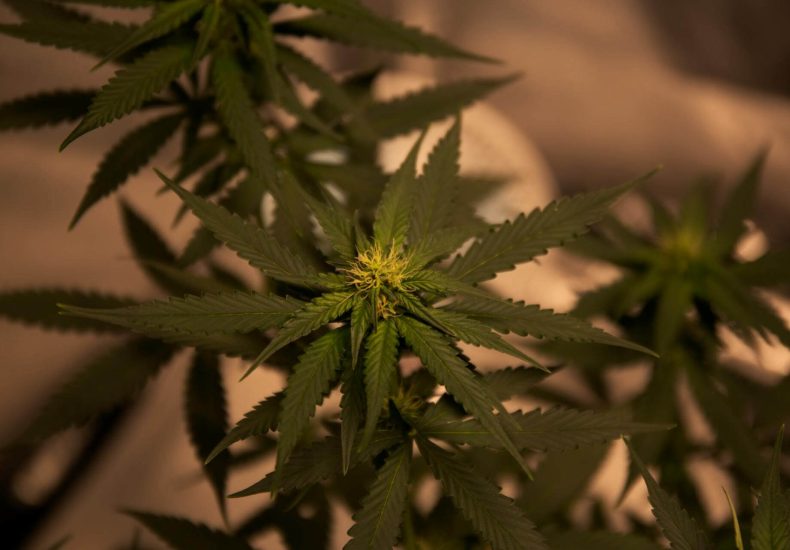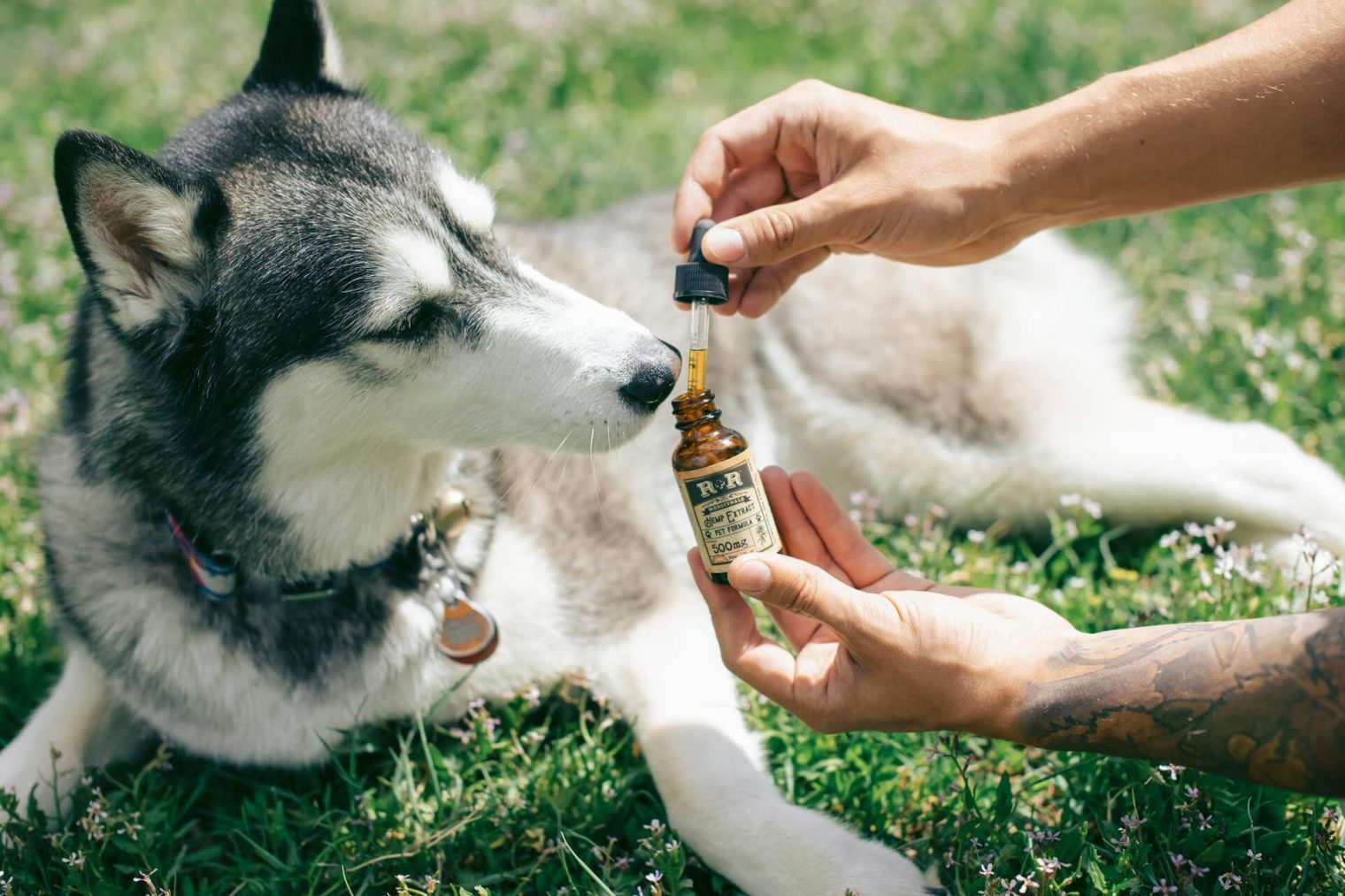 Cannabis
Cannabis
Table of Contents
Weed and pet care are an interesting combination that you need to know about. As more states move towards the legalization of marijuana, an unexpected issue has emerged: the impact of cannabis on our furry friends. Pet owners, often unaware, find themselves facing a scary situation when their beloved pets accidentally ingest THC products or are exposed to marijuana smoke.
This raises serious concerns about pet safety and marijuana use in homes with animals. It’s crucial to understand that while cannabis may offer benefits for humans, it can pose significant risks to pets.
Marijuana toxicity in pets is a growing problem, with symptoms ranging from mild lethargy to severe neurological issues. Every year, instances of THC exposure in animals climb higher, prompting a need for increased awareness and precaution among pet owners.
Our blog aims to shed light on how marijuana affects dogs and cats, identifying signs of marijuana poisoning in animals and outlining steps you can take to prevent accidental ingestion or exposure.
By educating yourself on these dangers and taking appropriate measures, you can ensure your pet’s health isn’t compromised by your cannabis use.
Keep your pets safe; read on to find out about weed and pet care!

Why Cannabis is Dangerous for Pets
Cannabis is dangerous for pets due to marijuana toxicity, which can lead to severe effects and symptoms in animals. Ingestion of THC by pets can result in poisoning and may require immediate treatment options.
Marijuana toxicity
Marijuana toxicity in pets becomes a grave concern with the rising accessibility of cannabis products. THC ingestion in pets can lead to severe health issues, as their bodies do not process THC the same way humans do.
Pets exposed to marijuana might exhibit various symptoms ranging from lethargy and uncoordinated movements to more serious neurological signs.
Treatment options for weed ingestion in pets require immediate veterinary attention. Veterinarians may induce vomiting or administer activated charcoal to prevent further absorption of THC into the bloodstream.
In cases of severe intoxication, supportive care such as fluids and medications to control symptoms like seizures might be necessary. Keeping an eye out for marijuana exposure in pets is crucial for any pet owner utilizing cannabis products, ensuring the safety and well-being of their furry companions.
Effects on pets
Cannabis ingestion in pets can lead to various effects, including lethargy, lack of coordination, vomiting, diarrhea, increased heart rate, and even seizures. Dogs are particularly vulnerable to THC toxicity due to their higher concentration of cannabinoid receptors.
Cats are also at risk. It’s crucial for pet owners to recognize the potential dangers of cannabis exposure and take preventive measures.
If your pet has ingested marijuana or shown symptoms of toxicity, seek immediate veterinary care. Early intervention is essential in mitigating the harmful effects and preventing further complications.
Understanding the risks associated with marijuana ingestion in pets is vital to ensuring their well-being.
Moving on from this topic about “- Effects on pets,” let’s delve into “Symptoms of toxicity” and ways to identify them in pets.
Symptoms of toxicity
After ingesting marijuana, pets may exhibit various symptoms of toxicity. These can include lethargy, lack of coordination, vomiting, diarrhea, excessive drooling, and in severe cases, seizures or coma.
Additionally, pets may experience an increased heart rate and heightened sensitivity to sound and touch.
If a pet shows any signs of these symptoms after potential exposure to cannabis products or secondhand smoke/vapors from marijuana use in the home, it’s crucial to seek immediate veterinary attention.
Symptoms associated with marijuana toxicity in pets often appear within 30 minutes to a few hours after ingestion or exposure.
It is essential for pet owners to be aware of these symptoms so they can act quickly and provide appropriate care for their beloved animals.
Treatment options
If your pet shows signs of marijuana toxicity, prompt medical treatment is crucial. The veterinarian may induce vomiting if the ingestion occurred within two hours. In severe cases, they may administer activated charcoal to prevent further absorption of the toxins.
IV fluids and supportive care are often required to manage symptoms such as low blood pressure and lethargy.
When pets are exposed to marijuana, it’s essential for the owner to seek immediate veterinary assistance. Treatment options typically include inducing vomiting and administering activated charcoal in milder cases.
Severe cases may require intensive care with IV fluids and close monitoring by a veterinarian.
How to Keep Your Pets Safe
Store cannabis products out of reach from pets, avoid accidental consumption, and minimize exposure to secondhand smoke and vapors to ensure your pets’ safety. For a deeper understanding of how to protect your pets, continue reading the full article.
Storing cannabis products away from pets
Storing cannabis products away from pets is crucial for their safety. Keep marijuana, CBD products, and edibles in secure places out of reach, such as locked cabinets or high shelves.
Choose storage areas that your pet cannot access, preventing accidental ingestion and potential toxicity. Ensure that any cannabis-related waste, including packaging and remnants of marijuana products, is disposed of securely to prevent pets from getting hold of them.
It’s important to remember that even small amounts of cannabis can be harmful to pets. By storing these products safely and responsibly, you can minimize the risk of exposure to your furry friends.
Avoiding accidental consumption
To prevent accidental consumption, it’s crucial to store cannabis products securely out of your pet’s reach. Place them in high cabinets or locked containers. Always supervise your pets while on walks to ensure they don’t consume discarded marijuana products or plants.
Educate friends and family about the dangers of leaving cannabis within a pet’s reach when visiting you. Keeping these precautions in mind will help minimize the risk of accidental ingestion by pets.
Now let’s explore what steps to take if your pet has been exposed to marijuana.
Secondhand smoke and vapors
Pets can be affected by secondhand smoke and vapors from cannabis just like humans. Dogs and cats that are exposed to secondhand marijuana smoke can experience symptoms such as sedation, disorientation, or even respiratory issues.
This exposure may also have adverse effects on their cardiovascular system. It’s important for pet owners to be mindful of this when using cannabis products and ensure that pets are not exposed to secondhand smoke or vapors.
Moving on from the risks of secondhand smoke and vapors, let’s explore what steps pet owners can take to prevent accidental consumption of cannabis by their pets.
What to Do if Your Pet is Exposed
If your pet is exposed to cannabis, seek immediate medical attention from a veterinarian. Watch for symptoms and inform your vet about the exposure for proper treatment.

Seeking immediate medical attention
If your pet shows signs of marijuana toxicity, such as incoordination, vomiting, or tremors, it is crucial to seek immediate medical attention from a veterinarian. Inform the vet about the exposure and its timing.
The sooner treatment is administered, the better the chances of a full recovery for your pet.
Pet owners must understand that swift action can make all the difference when dealing with marijuana ingestion in pets. Calling a veterinarian or an animal poison control hotline without delay is essential if you suspect your pet has ingested cannabis products.
In cases of accidental exposure to marijuana, time is of the essence in seeking medical help for your pet. Immediate intervention significantly increases their chances of overcoming cannabis toxicity and reduces potential long-term effects on their health.
– Signs of marijuana toxicity in pets include lethargy, drowsiness, dilated pupils, abnormal heart rate, vocalization or agitation.
– The ASPCA Poison Control Center reported over 1,800 cases related to marijuana exposure in animals in 2018.
– Early decontamination and supportive care are key components for treating pets exposed to cannabis.
Symptoms to watch for
When a pet is exposed to marijuana, there are specific symptoms to watch for that indicate toxicity. These include coordination problems, dilated pupils, lethargy, excessive drooling, vomiting, diarrhea, and in severe cases seizures or coma.
It’s important to note any unusual behavior exhibited by your pet after potential exposure to cannabis.
Understanding these symptoms and seeking immediate medical attention can greatly increase the chances of successful treatment for cannabis toxicity in pets. Being aware of these signs allows pet owners to act swiftly and provide necessary information to veterinarians.
Now let’s explore the next section about “Importance of informing your veterinarian” as part of our discussion on keeping pets safe from cannabis exposure.
Importance of informing your veterinarian
After noticing any symptoms of marijuana toxicity in pets, it is crucial to inform your veterinarian promptly. The vet can provide tailored treatment options based on the severity of the exposure.
Providing specific details about the type and amount of cannabis ingested by your pet will aid the veterinarian in devising an appropriate course of action. Timely communication with the vet significantly enhances the chances of successful treatment, ensuring the well-being and safety of your beloved pet.
Informing your veterinarian enables them to monitor and manage potential complications that may arise from marijuana ingestion in pets. Rapid intervention not only aids in alleviating symptoms but also prevents long-term health issues associated with cannabis exposure in animals.
Therefore, involving a veterinary professional at the earliest possible stage is vital for safeguarding your pet’s health.
Education and Advocacy
Educating pet owners about the dangers of cannabis is crucial. Supporting legislation on safe cannabis use around pets helps protect animal health and safety.
Educating pet owners about the dangers of cannabis
Educating pet owners about the dangers of cannabis is crucial to prevent accidental exposure in pets. It’s essential to raise awareness about the potential risks associated with marijuana ingestion in dogs and cats.
Providing information on the symptoms of toxicity, such as vomiting, lethargy, and disorientation, can help pet owners recognize when their animals may have been exposed to cannabis.
Sharing this knowledge empowers pet owners to take necessary precautions and seek prompt veterinary care if needed.
Furthermore, educating pet owners also involves highlighting the importance of keeping cannabis products securely stored away from pets. By understanding these risks, pet owners can take proactive measures to safeguard their furry friends from accidental ingestion or exposure to secondhand smoke and vapors coming from marijuana products at home or in public spaces.
By spreading awareness among pet owners about the dangers of cannabis ingestion for pets through educational campaigns and resources, we can potentially reduce instances of accidental exposure and promote safer environments for our beloved animal companions.
Supporting legislation on safe cannabis use around pets
As more states legalize cannabis, it’s crucial to advocate for legislation that ensures the safe use of marijuana around pets. By supporting such measures, we can help protect our furry friends from accidental ingestion and exposure to cannabis products.
This includes advocating for clear labeling on cannabis packaging, as well as regulations for child-resistant containers to prevent pets from accessing these products. Additionally, pushing for laws that require dispensaries and retailers to provide educational materials about the dangers of cannabis for pets will further safeguard animals from potential harm.
It is imperative to emphasize the importance of pet safety in relation to cannabis by actively participating in discussions with legislators and supporting initiatives aimed at creating a safer environment for both humans and pets in this ever-changing landscape of marijuana legalization.
Collaboration with veterinary professionals and organizations.
Collaboration with veterinary professionals and organizations is crucial in raising awareness about the risks of marijuana exposure to pets. By partnering with these experts, pet owners can access accurate information and guidance on keeping their animals safe from cannabis-related harm.
Working together, we can develop educational materials and training programs to ensure that veterinarians are well-equipped to recognize and treat cases of marijuana toxicity in pets.
Additionally, engaging with organizations dedicated to animal health enables us to advocate for policies that promote safe cannabis use around pets, further safeguarding the well-being of our furry companions.
The collaboration between pet care advocates and veterinary professionals plays a pivotal role in protecting pets from the dangers of marijuana. Together, we can provide invaluable resources for pet owners and healthcare providers, ensuring that they have the knowledge and support needed to keep animals safe from inadvertent cannabis exposure.
Weed and Pet Care in 2024
The relationship between weed and pet care is an interesting subject. After grasping the risks and precautions of cannabis use for pets, you can now implement simple and effective strategies to keep your beloved animals safe. By understanding these dangers, you can make informed decisions that may significantly improve pet safety.
If you wish to delve deeper into this topic, additional resources and expert guidance are available for further learning. Ultimately, safeguarding our pets from potential harm calls for proactive measures and an unwavering commitment to their well-being.


